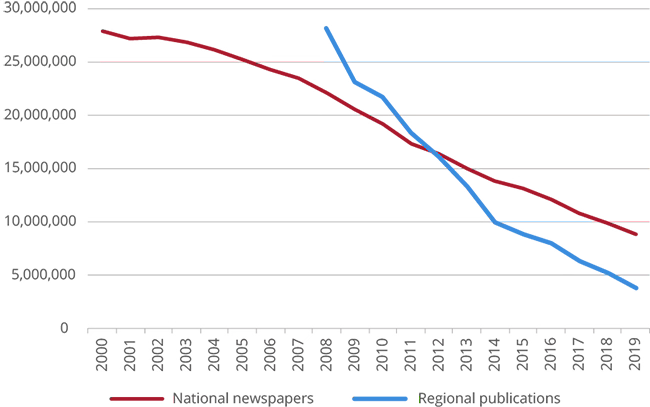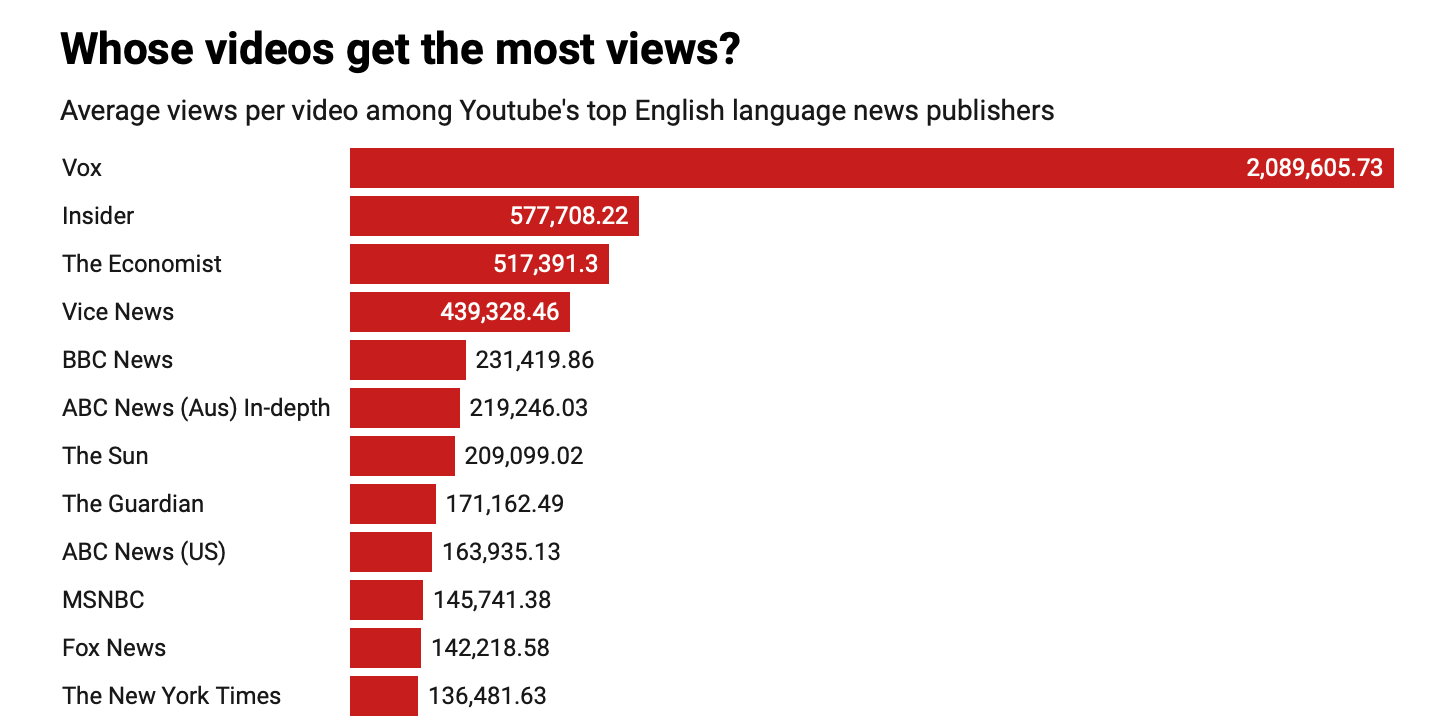Publisher YouTube channels TV producers should know about
21 channels from news and magazines as well as digitally native companies.
Print publishers started to see the internet eating into their reach and revenues earlier than TV, so for over 20 years as an industry they’ve been investing in online publishing and distribution as a way to bolster income and also find new, potentially global audiences.
The 2010s saw the birth of many new digitally-native publishing companies: Buzzfeed, Vice and Vox to name but a few. These publishers often targeting younger audiences by creating whole new genre-busting content styles and formats. The ability for these brands to create cultural moments was notable, such as in 2016 when 800k people tuned in to Facebook Live to watch Buzzfeed trying to explode a watermelon with rubber bands (sadly, the original video won’t embed on Substack, so here is the YouTube version):
The trajectory of each of these companies has had lessons for us all: the challenges of building sustainable online businesses; expanding too quickly; maintaining profitability when moving into higher cost production like TV; and perhaps most of all the risk of over-relying on third parties to drive traffic. On this last point, it is worth reflecting on the experience of Buzzfeed, which suffered a significant downturn in traffic following Facebook changing its algorithm.
I’ve written previously about how many print publishers over the last 20 years ended up chasing low value advertising on their websites, albeit in the context of local news:
Going after higher value video advertising became a strategy for many publishers over the 2010s, often referred to as ‘pivot to video’ which could involve reducing writing staff to hire social video producers. And while some publishers’ video strategies ran out of steam, others are now renewing their plans and increasing investment not only to build online audiences but also to attract those watching YouTube on connected TV sets. This is convergence in action, where the TV set - previously the domain of TV, film and games consoles - now has newspaper groups joining in to compete for the living room.
What you can see in this collection of publisher channels is how over time they coalesced around a handful of different approaches.
For example, the rise and rise of the explainer format. This is a format that first emerged via B2B businesses back in the mid 2000s where they created videos to show how products and services worked. Companies like Vox popularised it with audiences who were wanting to get to grips with a subject quickly and easily. They work across broad topics: news, fitness, home renovations, travel, tech, and you will see this format appear again and again across not just all these publisher channels but also everything from creators to broadcasters; brands to charities. For example, you can see it appearing in these documentary and news and current affairs creator channel lists, or from broadcasters, such as the BBC’s Ros Atkins.
Part of the appeal of the explainer format is that by using talking heads, graphics, stock footage and voiceover, a set of vertical and horizontal assets of different lengths can be created to use on all social platforms and websites.
Many have gone down the route of establishing a set of shows on their channel, to help gather together content under each brand, which you can assume helps flag different content types to audiences and advertisers as well as perhaps makes content production more efficient.
Video podcasts are also another key pillar for many of the channels. For smaller magazines and publishers, they can often form the lion’s share of the content as discussion-based podcasts usually have lower production costs and can then be clipped up, repackaged and distributed across their network in multiple formats: social video across multiple feeds, longer video podcasts, audio podcasts.
Finally, it is worth noting the extent to which some of these publisher channels are trying to create content that has a much longer tail than daily news reporting, breaking news footage or ‘takes’ that moves on so quickly. The nature of YouTube means that good content will be still watched year in year out (and therefore be earning income into the future), so the longer the shelf-life the better. Plus, while certain breaking news videos might get lots of views, advertisers are less likely to want their brands sitting alongside images of disasters or tragedies.
Even so, it is really challenging to grow video organically for some publishing operations, especially those without deep pockets that were former solely print businesses. This Press Gazette piece says that since 2020, video revenues for the publishers they track contracted by 15%.
As always, while I’ve focussed here on YouTube, all of these brands are running a network of channels across platforms, which usually include their own websites, YouTube, TikTok, Instagram, Facebook, X, Blue Sky, podcasts and perhaps other niches like Substack or Discord.
Vox
Subscribers: 12.5m
Video views: 3.6bn
Vox was one of the new types of digital publishers that were launched in the 2010s. Vox made a name for itself in the ‘explainer’ category, and in 2018 they co-produced with Netflix the series ‘Explained’, which then led to other spin-off series. Back in 2022, they were the top English language news publisher on YouTube in terms of views, according to the Press Gazette:
Keep reading with a 7-day free trial
Subscribe to Business of TV to keep reading this post and get 7 days of free access to the full post archives.







